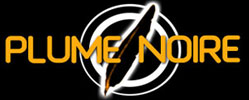
|
Vampyr review
:. Director: Carl Theodor Dreyer
:. Starring: Julian West, Henriette Gérard
:. Running Time: 1:12
:. Year: 1932
:. Country: France/Germany
|
Directed in 1932 by Carl Theodor Dreyer, better known for The Passion of Joan of Arc, Vampyr, a curious mixture of vampires and ghosts, can be seen as the precursor of a genre (re)launched by the Sixth Sense.
A free adaptation of the Joseph Sheridan novel In A Glass Darkly, the film follows the inopportune wanderings of David Gray in a hotel/castle, a hunter of paranormal phenomena.
Equipped with a rather evasive narrative, Vampyr resembles a series of vignettes dealing with the beyond and vampirism more than a complete work. The director distills the future ingredients of the horror genre without linking them or every creating the element of fear. The result is a baroque film that prevails with unquestionable originality. First of all, Vampyr is a hybrid between a silent and talkie film. For his first talking picture, Dreyer doesn't abandon the use of written intermissions summarizing the story. This French-German production also offers a strange mix of French actors and settings with German dialogues. Lastly, the film crosses two horror sub-genres such as vampires and ghosts.
Another curiosity, the gray and fuzzy photography is the result of an accidental light leak in the camera and it gave the director the idea to shoot the full-length that way. To the lugubrious atmosphere we add the sinister sets of Herman Warm, of the Cabinet of Dr. Caligari's fame. The film doesn't have an artistic dimension. Rather, Vampyr has more symbolic value offering a succession of visual allegories.
To start, the arrival at the hotel is marked by the reaper sounding a small bell. A rather revealing clue, which after the meeting of the other deformed hosts, seems to make this hotel the last stop before Hell. The lugubrious atmosphere, the presence of sinister tables and voices coming from nowhere obviously do not make things better.
David Gray then leaves to explore the neighboring area, which enables us to discover a succession of elements that have since been recycled many times in horror movies. From the shot of the key turning by itself in a lock to the use of shadows symbolizing death (already used in Nosferatu), vampire bites, an assassination in a manor and a death in a silo. One also finds a ghost ball that certainly must have inspired the cult classic Carnival of Souls. The film also abounds in skeletons while the use of deformities finds an echo in David Lynch's work. But, the most outstanding moment is undoubtedly the twist, which since the Sixth Sense and The Others seems to be the current tactic in horror films. An astonishing similarity which, voluntary or not, only confirms the inventiveness of cinema pioneers and confronts the creative limits of contemporary cinema.
Note that on the DVD, the main feature is followed by a sinister and amusing short-film which showed "dreams" already used as a twist.
Fred Thom

 Latest Cult Cinema Reviews Latest Cult Cinema Reviews
 Cult Films: 1998 - 2011 Reviews Cult Films: 1998 - 2011 Reviews
|
|


